-
 Bitcoin
Bitcoin $82,268.0001
-4.04% -
 Ethereum
Ethereum $1,777.8015
-5.02% -
 Tether USDt
Tether USDt $0.9997
-0.03% -
 XRP
XRP $2.0017
-5.57% -
 BNB
BNB $584.3181
-3.27% -
 USDC
USDC $0.9999
-0.02% -
 Solana
Solana $113.9101
-10.18% -
 Dogecoin
Dogecoin $0.1582
-7.95% -
 TRON
TRON $0.2338
-1.55% -
 Cardano
Cardano $0.6241
-8.78% -
 Toncoin
Toncoin $3.5629
-12.05% -
 UNUS SED LEO
UNUS SED LEO $9.3926
0.04% -
 Chainlink
Chainlink $12.4716
-8.37% -
 Stellar
Stellar $0.2537
-5.64% -
 Avalanche
Avalanche $18.0808
-5.86% -
 Sui
Sui $2.2582
-8.11% -
 Shiba Inu
Shiba Inu $0.0...01212
-2.66% -
 Hedera
Hedera $0.1562
-6.92% -
 Litecoin
Litecoin $81.9021
-1.77% -
 Polkadot
Polkadot $3.9168
-4.95% -
 MANTRA
MANTRA $6.2584
-0.81% -
 Bitcoin Cash
Bitcoin Cash $296.8025
-3.05% -
 Bitget Token
Bitget Token $4.4990
-1.96% -
 Dai
Dai $0.9999
0.02% -
 Ethena USDe
Ethena USDe $0.9996
-0.03% -
 Monero
Monero $212.8042
-2.13% -
 Pi
Pi $0.5633
-17.59% -
 Hyperliquid
Hyperliquid $11.1531
-17.45% -
 Uniswap
Uniswap $5.7444
-5.64% -
 Aptos
Aptos $5.0383
-5.12%
What is "On-Chain Analysis"? How does it help investment decisions?
On-chain analysis examines blockchain data like transaction volume and active addresses to provide insights into market trends and inform investment decisions.
Apr 01, 2025 at 03:14 pm
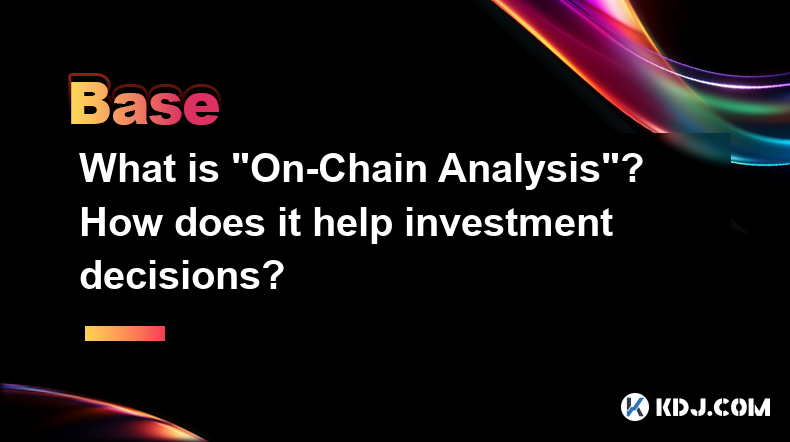
Understanding On-Chain Analysis in Cryptocurrency
On-chain analysis refers to the process of examining data directly from a blockchain's ledger. This data provides insights into the behavior of the cryptocurrency's network and its users. Unlike off-chain analysis which looks at external factors, on-chain analysis focuses solely on information recorded on the blockchain itself. This includes transaction details, address activity, and network statistics. By analyzing this data, analysts can gain a deeper understanding of market trends and sentiment.
Key Data Points Used in On-Chain Analysis
Several key metrics are crucial for effective on-chain analysis. These metrics provide a comprehensive view of the cryptocurrency's state.
Transaction Volume: The total number of transactions processed on the network over a specific period. High transaction volume can indicate increased activity and potentially higher demand.
Active Addresses: The number of unique addresses that have performed transactions within a given timeframe. A rise in active addresses suggests growing user adoption and network participation.
Exchange Inflows/Outflows: Tracking the movement of cryptocurrency between exchanges and user wallets can reveal insights into selling pressure or accumulation. Large inflows might signal potential selling, while outflows suggest accumulation.
Hash Rate: This metric measures the computational power securing the blockchain. A high hash rate generally indicates a more secure and robust network.
Miner Revenue: The total amount of cryptocurrency miners receive as rewards for validating transactions. This can be an indicator of network profitability and miner sentiment.
Supply Distribution: Analyzing the distribution of cryptocurrency among different addresses can reveal the concentration of holdings. A highly concentrated supply might indicate potential risks.
Network Fees: The fees paid for transactions on the network. High network fees often reflect high demand and network congestion.
How On-Chain Analysis Informs Investment Decisions
On-chain analysis provides several ways to inform investment decisions by offering a more objective perspective than relying solely on price action.
By tracking transaction volume, analysts can gauge market interest. A significant increase in transactions might suggest growing demand and potential price appreciation. Conversely, a decline might signal waning interest.
Monitoring active addresses helps assess user engagement. A rising number of active addresses usually points towards increasing adoption and a healthier network, potentially suggesting a bullish outlook.
Analyzing exchange inflows and outflows helps predict market movements. Large inflows to exchanges often precede selling pressure, while significant outflows suggest accumulation.
Observing the hash rate offers insight into network security. A stable or increasing hash rate suggests a secure network, reducing the risk of attacks.
Examining miner revenue provides a perspective on network profitability. High miner revenue might indicate a healthy and sustainable ecosystem.
Interpreting On-Chain Data and its Limitations
Interpreting on-chain data requires expertise and careful consideration. Correlation doesn't equal causation. While on-chain data can provide valuable insights, it shouldn't be the sole basis for investment decisions. External factors, market sentiment, and regulatory changes also play significant roles. Furthermore, manipulating on-chain data is possible, though challenging.
Analyzing on-chain data involves identifying trends and patterns over time. Sudden spikes or dips in metrics require further investigation to understand the underlying causes. Comparing different metrics simultaneously provides a more nuanced understanding of the market dynamics.
Tools and Resources for On-Chain Analysis
Several tools and resources are available to perform on-chain analysis. These tools often provide user-friendly interfaces and visualizations to simplify the analysis process. Some popular choices include Glassnode, IntoTheBlock, and Santiment. Each platform offers a unique set of metrics and analytical capabilities. Understanding the strengths and limitations of each tool is crucial for effective analysis.
Advanced On-Chain Analysis Techniques
Advanced techniques involve combining on-chain data with other datasets, such as social media sentiment or macroeconomic indicators. This allows for a more holistic analysis of the market. For example, combining on-chain data with social media sentiment can help gauge the overall market sentiment and its potential impact on price.
Frequently Asked Questions
Q: What is the difference between on-chain and off-chain analysis?
A: On-chain analysis examines data directly from the blockchain, while off-chain analysis considers external factors like market sentiment, regulatory changes, and news events.
Q: Can on-chain analysis predict future price movements accurately?
A: No, on-chain analysis doesn't provide perfect predictions. It offers valuable insights into market dynamics but shouldn't be the sole basis for investment decisions. It's one piece of a larger puzzle.
Q: What are some limitations of on-chain analysis?
A: Data manipulation, the need for expertise in interpretation, and the fact that correlation doesn't equal causation are all limitations. External factors can also significantly impact price movements.
Q: Are there free resources available for on-chain analysis?
A: Yes, some platforms offer free access to basic on-chain data, although more comprehensive data and advanced features often require paid subscriptions.
Q: How can I learn more about on-chain analysis?
A: Numerous online resources, including articles, courses, and tutorials, are available to help you learn about on-chain analysis. Following experts in the field on social media can also be beneficial. Start with the basics and gradually explore more advanced techniques.
Disclaimer:info@kdj.com
The information provided is not trading advice. kdj.com does not assume any responsibility for any investments made based on the information provided in this article. Cryptocurrencies are highly volatile and it is highly recommended that you invest with caution after thorough research!
If you believe that the content used on this website infringes your copyright, please contact us immediately (info@kdj.com) and we will delete it promptly.
- Jack Dorsey Warns Bitcoin (BTC) Could Lose Its Open Ethos as Institutional Investment Grows
- 2025-04-03 22:45:11
- Kadena Launches Chainweb EVM with 20 New EVM-Compatible Chains
- 2025-04-03 22:45:11
- Currently, Shiba Inu (SHIB) is trading at $0.00001211 after experiencing a 1.65% decrease in the last 24 hours and a 5.03% decrease over the past 30 days. These figures show that while there is short-term selling pressure, the overall medium-term trend sh
- 2025-04-03 22:40:12
- Supermicro Systems with the NVIDIA B200 Outperform the Previous Generation of Systems with 3X the Token Generation Per Second
- 2025-04-03 22:40:12
- Supermicro Systems with the NVIDIA B200 Outperformed the Previous Generation of Systems by Delivering 3X the Token Generation Per Second
- 2025-04-03 22:35:12
- Kevin O'Leary and Dave Portnoy Join the Lineup of Speakers at Consensus Toronto 2025
- 2025-04-03 22:35:12
Related knowledge

Why can the inverted hammer shape appear at the bottom be used as a reversal signal?
Apr 03,2025 at 04:07pm
Inverted Hammer is a common K-line pattern in technical analysis, and is often regarded as a potential reversal signal when it appears at the bottom. This article will explore in detail why an inverted hammer line may be a reversal signal when it appears at the bottom, and provide specific identification and application methods. Basic characteristics of...
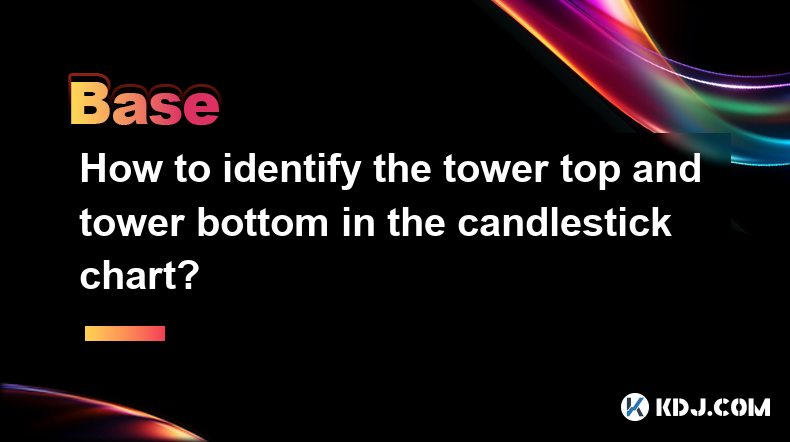
How to identify the tower top and tower bottom in the candlestick chart?
Apr 03,2025 at 04:03pm
In K-line chart analysis, 'Tower Top' and 'Tower Bottom' are two important reversal patterns and are usually used to predict changes in price trends. Identifying these patterns requires careful observation of the price trend and the pattern characteristics of the K-line. Below we will introduce in detail how to identify the 'tower to...
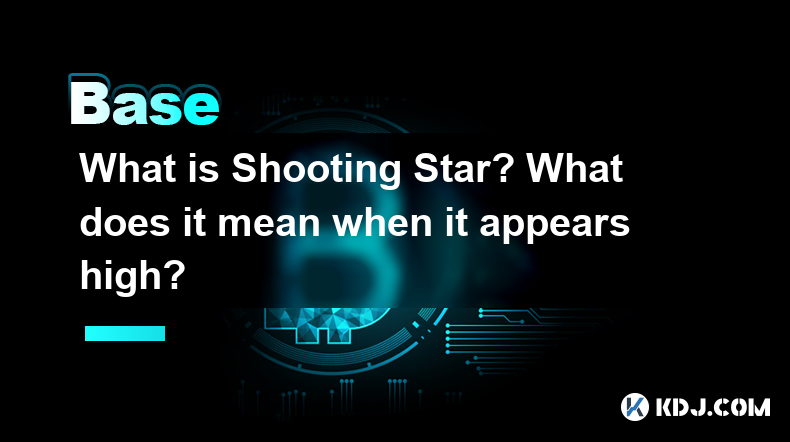
What is Shooting Star? What does it mean when it appears high?
Apr 03,2025 at 03:56pm
In cryptocurrency trading, technical analysis is an important tool to help traders predict future trends of the market. Among them, Shooting Star is a common bearish reversal pattern. This article will give you more details on what 'Shooting Star' is and what it means when it appears at a high level. The definition of 'Shooting Star'Shoo...

What is the difference between dark cloud cover and piercing shape?
Apr 03,2025 at 03:50pm
In the world of cryptocurrency trading, technical analysis is one of the important tools traders use to predict market trends and make trading decisions. Among them, 'Dark Cloud Cover' and 'Piercing Pattern' are two common reversal patterns, which have specific appearance and meaning on the K-line chart. Although they seem similar, there...
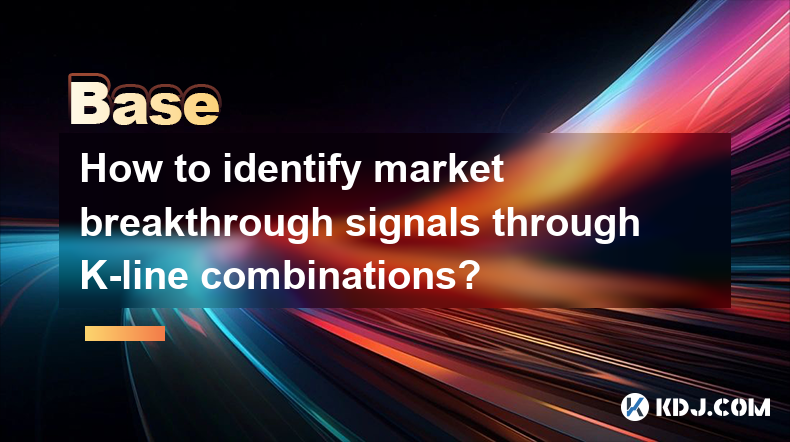
How to identify market breakthrough signals through K-line combinations?
Apr 03,2025 at 03:46pm
In cryptocurrency markets, identifying breakthrough signals is crucial for traders. K-line chart is a commonly used technical analysis tool. By analyzing K-line combinations, traders can more accurately identify the market's breakthrough signals. This article will introduce in detail how to identify the breakthrough signals of the market through the...
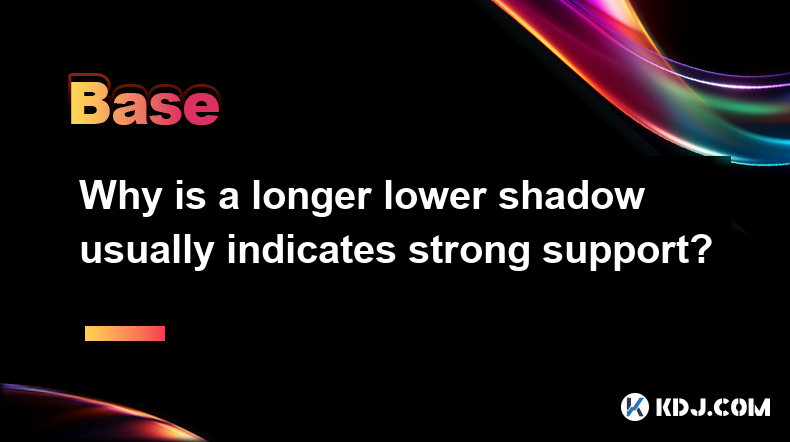
Why is a longer lower shadow usually indicates strong support?
Apr 03,2025 at 03:43pm
The long lower shadow is an important form in technical analysis and is often used by investors to judge the strength of the market's support. The long lower shadow refers to the fact that the lower shadow of a certain K-line is significantly longer than the solid part and the upper shadow in the K-line chart. This pattern usually means that at a ce...

Why can the inverted hammer shape appear at the bottom be used as a reversal signal?
Apr 03,2025 at 04:07pm
Inverted Hammer is a common K-line pattern in technical analysis, and is often regarded as a potential reversal signal when it appears at the bottom. This article will explore in detail why an inverted hammer line may be a reversal signal when it appears at the bottom, and provide specific identification and application methods. Basic characteristics of...

How to identify the tower top and tower bottom in the candlestick chart?
Apr 03,2025 at 04:03pm
In K-line chart analysis, 'Tower Top' and 'Tower Bottom' are two important reversal patterns and are usually used to predict changes in price trends. Identifying these patterns requires careful observation of the price trend and the pattern characteristics of the K-line. Below we will introduce in detail how to identify the 'tower to...

What is Shooting Star? What does it mean when it appears high?
Apr 03,2025 at 03:56pm
In cryptocurrency trading, technical analysis is an important tool to help traders predict future trends of the market. Among them, Shooting Star is a common bearish reversal pattern. This article will give you more details on what 'Shooting Star' is and what it means when it appears at a high level. The definition of 'Shooting Star'Shoo...

What is the difference between dark cloud cover and piercing shape?
Apr 03,2025 at 03:50pm
In the world of cryptocurrency trading, technical analysis is one of the important tools traders use to predict market trends and make trading decisions. Among them, 'Dark Cloud Cover' and 'Piercing Pattern' are two common reversal patterns, which have specific appearance and meaning on the K-line chart. Although they seem similar, there...

How to identify market breakthrough signals through K-line combinations?
Apr 03,2025 at 03:46pm
In cryptocurrency markets, identifying breakthrough signals is crucial for traders. K-line chart is a commonly used technical analysis tool. By analyzing K-line combinations, traders can more accurately identify the market's breakthrough signals. This article will introduce in detail how to identify the breakthrough signals of the market through the...

Why is a longer lower shadow usually indicates strong support?
Apr 03,2025 at 03:43pm
The long lower shadow is an important form in technical analysis and is often used by investors to judge the strength of the market's support. The long lower shadow refers to the fact that the lower shadow of a certain K-line is significantly longer than the solid part and the upper shadow in the K-line chart. This pattern usually means that at a ce...
See all articles























































































